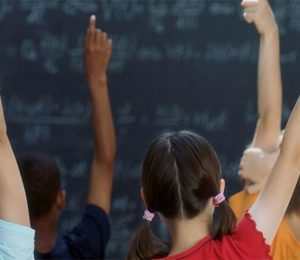A grade seven student arrives home looking sad. Her mother asks what’s wrong, but is told “nothing’s the matter”. Later, the child refuses supper, saying that she has a stomach ache. After her daughter has gone to bed, the mom receives a phone call from her daughter’s friend’s mom. She learns that both of their daughters, along with three other students, had spent part of their day in the company of a couple of school staff investigating an issue that had been brought to their attention by some other students in regards to “inappropriate conduct” during recess.
The other mom is irate. She shares that her daughter had also arrived home from school looking upset. After some prodding, her daughter, in tears, shared the events of the day. The two moms, upset that they had not been informed about this incident by school administrators, arrange to arrive at the principal’s office first thing the following morning. They want to know how and why their children were questioned. Surely, they think, if the situation was serious enough to warrant being removed from class and questioned, they should have been told.
The following morning, the moms are reassured that at least their daughters are not at fault. They are told that the girls had been called in as part of an investigation into inappropriate behaviour by a classmate towards another peer. They had been questioned (“interrogated” the girls called it), together with the other girls and then apart, to try to get to the root of the problem. So, even though their girls had thought they were in trouble, that they had done something wrong, this was actually not true. And the girls’ story that they were never told why they were being questioned or what part they played in the situation, was not refuted by the principal.
The principal apologized and said that they had never intended to make the girls feel intimidated (even though that is exactly how the girls felt) but the damage had already been done. The girls’ experience with helping to resolve a bullying situation that revolved around a classmate, had been very negative. They had felt like criminals and at times, spies. They had felt as if they were, ironically, being bullied by the two large adults looming opposite them. They had felt like they wanted to run out of the small closed door office in tears, but stayed, knowing that to get up and leave would make the situation worse.
When the moms, knowing by then how their daughters felt, requested that they be called in the future should their daughters input be required, they were told that the Board policy did not require that this happen. They were told that any student could be questioned without his or her parent’s permission so long as the incident occurred on school property. The moms were not happy to hear this.
This story, and others like it, have been recounted to me over the past while by parents and children concerned about the way in which incidents such as bullying, defiance, inappropriate behaviour and threats have been handled at school.
Over the same period of time, there has been a movement away from punitive measures such as suspension and expulsion from school. This is not a bad thing since being forced to spend time away from school doesn’t always have the desired effect. In fact, it can lead to other problems -especially if the child is unsupervised or sitting idle. Instead, many school Boards have adopted a restorative justice approach. This means that facilitators (often child and youth workers or specific teachers) within the school, work with victims, aggressors, along with teachers and other adults to restore the situation back to what it was prior to the troubling incident.
The intention is wonderful and makes sense, but unfortunately, if the process is not implemented in its purest form and if the key players don’t have a solid understanding of how the restorative justice approach works, then even with the best of intentions, the process may go awry and lead to other more serious consequences – such as children being afraid to share incidents with school personnel for fear of how they are going to be dealt with.
Rick Kelly is a Professor in the Child and Youth Worker program at George Brown College in Toronto. He has been explicitly using a Restorative/Peacemaking philosophy for the past 12 years as a restorative conference facilitator and trainer, and, implicitly throughout his career, and as a parent of 5 children and a baseball coach. Rick believes, amongst other things, that as a parent, you have the right to know who is responsible for responding to critical situations at school, what training they have received to facilitate change and how the situation is managed. He believes in “transparency.” So, the big question is: have you been informed about how and who in your child’s school resolves conflict?
And if you this hasn’t been communicated to you already, how are you going to find out to make sure that your child’s school is dealing with difficult situations in a way that ensures your child feels that he or she is in a safe, supportive environment with adults who can be counted on to effectively model conflict resolution?
As part of your research, may I suggest that you to listen to my conversation with Rick Kelly about restorative justice and how bullying is being handled in schools today. This can be found under the podcast section at www.helpmesara.com.
Related: Read Tracie Wagman’s post Bully: A Call To Action
About the Author:

Sara Dimerman has been an individual, couple and family therapist for over twenty years. She is one of North America’s most trusted parenting and relationship experts and the author of three books – ‘Am I A Normal Parent?’, ‘Character Is the Key’ and a soon to be released book for couples – ‘How can I be your Lover when I’m too Busy being your Mother?’. Learn more or listen to advice from Sara and her colleagues by searching for “helpmesara” podcasts on iTunes or by visiting www.helpmesara.com.



